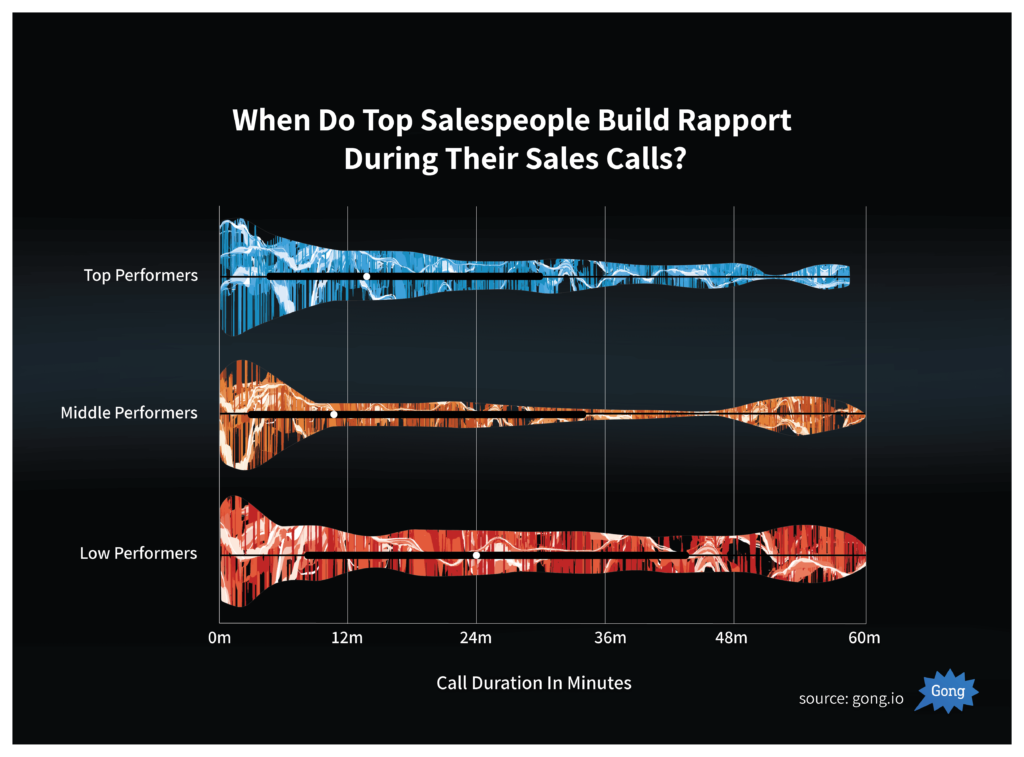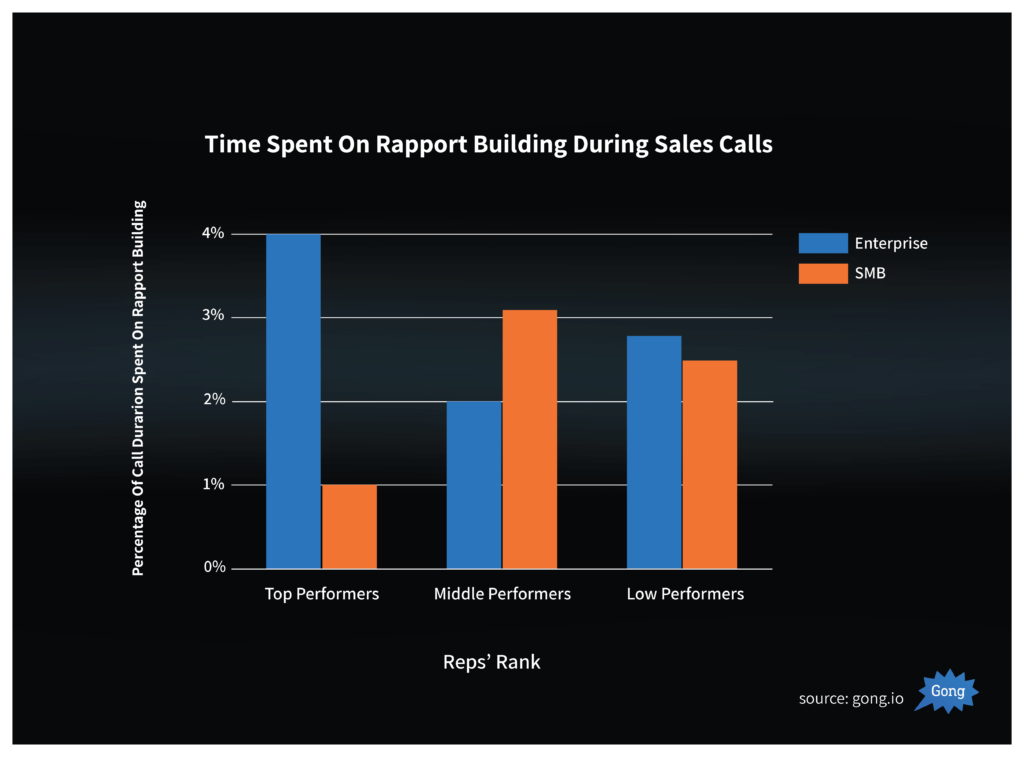Hack rapport building in sales with proven data-driven techniques
In the Gong Research Labs series, we publish data from analyzing sales calls with natural language processing and AI. Subscribe here for new data every week.
. . .
Understanding Rapport Building
The best way to build rapport in sales changes from situation to situation.
What works in one case actively causes failure in another. Winning strategies have a way of reversing themselves if used at the wrong time or place.
The very behaviors that make one class of salesperson successful in his or her market cause failure for another class of salesperson selling to a different market.
This is true for virtually all well-established sales techniques. True sales prowess comes less from knowing the sales techniques and methods and more in sorting out the situations in which each applies.
Building rapport is no exception.
While I can’t help you sort through every situation, our data scientists happened to pull some stark rapport-building differences between top and bottom sales performers from analyzing a massive database of B2B sales call & demo recordings.
The Data on Rapport Building
Rapport Building Hinders High-Velocity Sales and Helps Complex Sales
The best approach to rapport building is a function of how complex your sale is.
We analyzed two tightly segmented groups of salespeople:
- Those that sell to the enterprise (1,000+ employees with at least a 90-day sales cycle)
- Those that sell to SMBs (less than 100 employees with a maximum 30-day sales cycle)
For those that sell to the enterprise, the highest performing salespeople spent the most time building rapport:
The more time that was spent on rapport-building conversation, the greater the closing ratio.
However, it was the exact opposite in the case of selling to SMBs.
The highest performing salespeople in this group spent the least amount of time building rapport. Their low-performing counterparts spent twice as much time on rapport-building conversation.
Top-tier enterprise reps spend 4% of their call time building rapport, but top-tier SMB reps spend less than 1% of their time building rapport.
The most effective approach to rapport reversed itself between the two groups.
Rapport Building Techniques
Build rapport at the beginning of the call.
Whether or not they sell to the enterprise or to SMBs, the best salespeople build rapport early on in their sales calls compared to their peers:

Low performing reps, by contrast, tend to spread their rapport-building conversations evenly like peanut butter through the entire duration of a call.
The most common point in sales calls for a low performer to build rapport is at the 40% mark, whereas top-tier salespeople build rapport before the first 20% of the call.
Rapport Building Data This Week, New Data Next Week
Building rapport is perhaps the least data-driven aspect of selling.
Rather than taking this data so seriously that you refuse to vibe and build rapport past the 20% milestone of your calls, I hope you instead use this as a barometer that points you in the right direction.
Stay tuned for more data next week. In the meantime, feel free to tell me what you make of this in the comments below.

